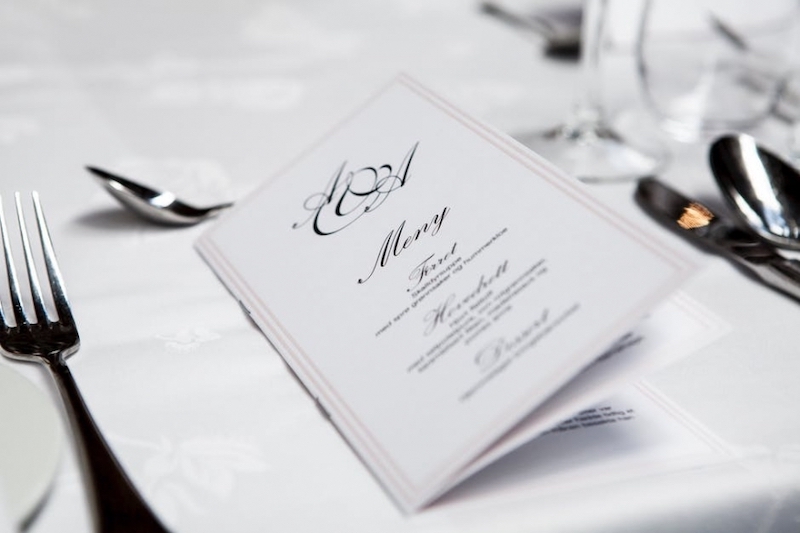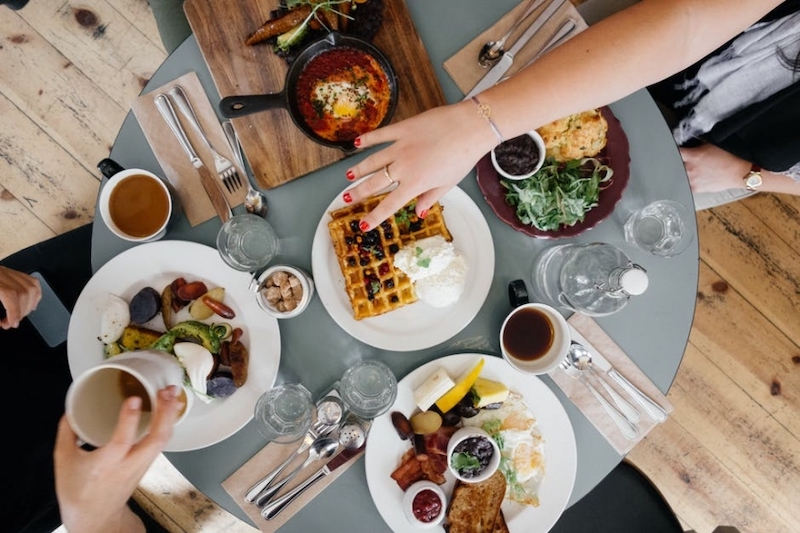The menu is the basis of the restaurant business. This is not just a list of dishes served in the establishment, but a way to offer the visitor what he is most interested in, to capture his attention. A frequent mistake of novice restaurateurs is to tackle menu layout last. It is better to fully plan the menu of your establishment at the stage of drawing up a cafe or restaurant business plan. When the interior, sign and logo are ready, it can be difficult to match the menu to the already created atmosphere of the establishment. It is logical to start with the menu, and you should do it before you plan how to furnish your restaurant or cafe. The image of the establishment is expressed in the choice of cuisine and key dishes, and only then comes the time of the interior and style. Even the uniform of the staff depends on the menu! Imagine waiters in kimonos with a menu that only has pizza and craft beer to choose from.
A good restaurant menu should also be convenient for your waiters, so that they can quickly find the right item and forward the order to the kitchen. This is very easily embodied in the Poster POS cafe automation system. Take advantage of the free trial period, create a menu and see how it will look on your tablet.
Advice for novice restaurateurs
Do not neglect the simplest advice: look at examples of restaurant menus from your competitors. Does it harmonize with the general concept of the establishment and what do visitors order most often? Don’t be afraid to borrow from successful models and add them to your menu. Of course, you shouldn’t brazenly copy a ready-made menu for a cafe. You can correctly make a menu for a cafe or restaurant only after analyzing the market.
Stages of menu development for a restaurant
Creating a menu for a cafe or restaurant can be divided into several stages. First, you form a concept: groups of drinks and dishes, positions in each group and price categories. Then a test tasting, after which you select key dishes on the menu. The final stage is the creation of technological maps and the selection of the optimal presentation of the dish to the visitor. We advise you to invite an experienced chef to draw up technical cards, which will be used by your cooks in the future.
What should be taken into account when developing a menu?
- Target audience
- Choice of cuisine
- Institution format
- The level of trade markup and the optimal cost of each dish
- Culinary trends

Long or short menu
Remember, a long menu increases customer service time. Instead of deciding on an order in a few minutes, they will study the menu for a long time and scrupulously. This especially applies to customers who have come to you for the first time. They also won’t be able to decide what they should try and will consult with the waiter. The service speed of other tables will decrease significantly, and therefore you will lose money. Some restaurateurs argue in favor of a long menu that the customer, having tried everything, will stop coming to your establishment. This is a misconception. Remember: your regular customers come back to eat their favorite dish again and recommend it to their friends. Don’t confuse the menu with the weekly or monthly specials booklet, which is often used as a place mat or placed in a pyramid shape on the table. It’s a great way to highlight your marginal positions and seasonal dishes, which we’ll talk about below.
How to make a menu that will sell
Let’s say that your establishment has already started work and you have worked out a good menu for the cafe. But you notice that some dishes are not selling well, even though they have a minimal markup. It is important not only to work out the menu, but also to make it so that it sells. It all starts with the analysis of the available assortment and the identification of the most marginal and most popular items. Perhaps we will reveal the secret of the restaurant business to someone, but almost all restaurant owners have been using the simplest and best method for more than 30 years.
The classic method of menu engineering was developed in the early 1980s by scientists from the University of Michigan — Donald Smith and Michael Casanava from the USA. They took a popular market analysis model and adapted it to the restaurant business to understand how different menu items work. Then they divided all dishes from the menu according to two criteria: the share of sales in the category (compared to the average) and the margin per product unit (compared to the average). There were only four groups of dishes:
- “Stars” – high margin and good sales. The basis of a profitable menu.
- “Workhorses” is a good sale, but not a very high margin. You should not remove them from the menu, but you should strive to reduce their cost or increase the price.
- “Mysteries” – high margins, but poor sales. It is necessary to stimulate the demand for such positions.
- “Dogs” – low margins and poor sales. Garbage that needs to be removed from the menu. Such dishes only distract the attention of visitors.

Analysis of dishes
We will conduct an analysis in one menu category. As an example, consider the “beer snacks” category in the bar menu. Our goal is to determine which group a dish belongs to. We took sales data for one day in an imaginary cafe, but it is better to conduct such an analysis over a weekly or monthly period to avoid errors.
We fill in the table:
The number of all dishes sold per day: 15 + 70 + 30 + 85 = 200. We compile the known data and enter the total sales volume, total gross cost and gross margin. If you want to calculate the food cost, then divide the gross cost by the total sales volume in the category and multiply by 100%: 14,620.5 / 58,400 * 100 = 25%.
To find out the average margin of dishes, divide the gross margin by the total number of items sold: 43779.5 / 200 = 218.9. By comparing the data for each position with this figure, you will understand which dishes you have high margin and which ones are not.
To find out the sales share of each dish, divide the number of servings sold by the total number of dishes sold and multiply by 100. If you want to find out the average sales share of a dish in this category, then divide 100% by the number of items in the “beer snacks” category: 100 / 4 = 25%. By comparing the sales share of each dish to the average sales share, you will identify the most and least popular dishes. Results:
Onion rings are the “star”, high margin and great popularity.
Basturma is a “dog”, low margins and demand. Feel free to remove the snack from the menu and replace it with a profitable item that will appeal to your visitors.
Crackers are a typical “workhorse”, high popularity, but low margin. The cheapest position in the category. Perhaps it is worth raising the price of the dish.
Cheese balls are a “mystery”, good margin, but poor sales. It is necessary to make the position more popular. Run a promotion or special offer with this dish, highlight it on the menu and task the waiters to offer it more often.

